La Galette des Rois: A French tradition I love!
If you’re in France in January, you can’t miss the Galette des Rois, the French King’s Cake This delicious cake is a real institution here, and one of my favorite times of the year. But what exactly is this tradition?
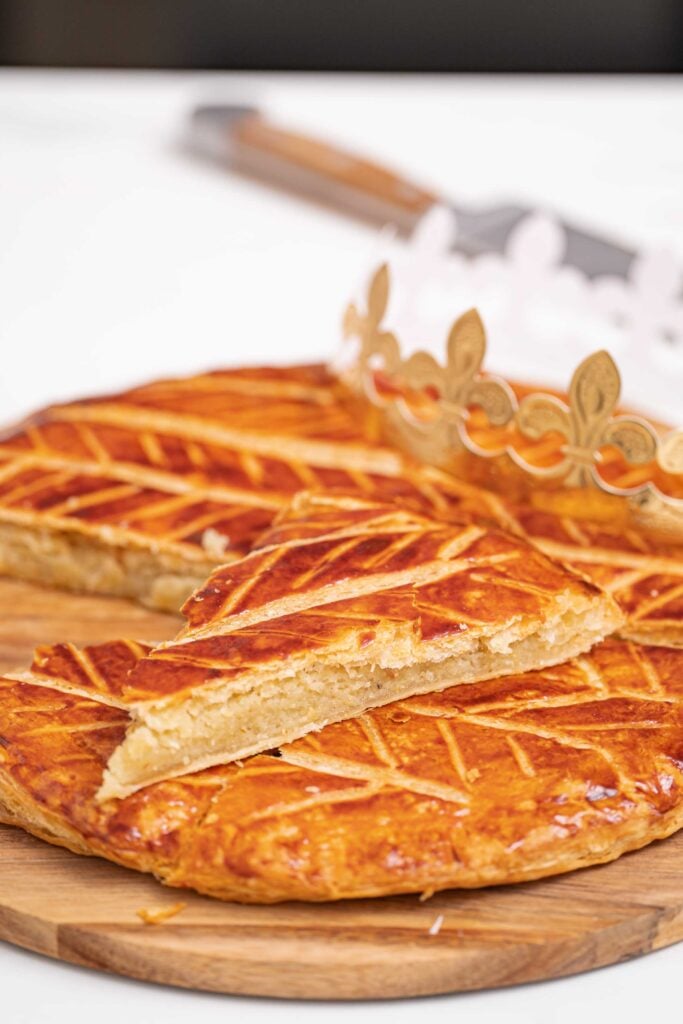
What is the Galette des Rois?
The Galette des Rois or French King’s Cake is a simple but irresistible cake, made of flaky puff pastry and filled with frangipane, an almond-based cream.
There are two versions of the frangipane: the classic, which mixes almond cream and crème pâtissière for an smoother texture, and the almond-butter cream version, for a quick fix. Here’s my recipe for the Traditional Galette des Rois (with pastry cream), my favorite!
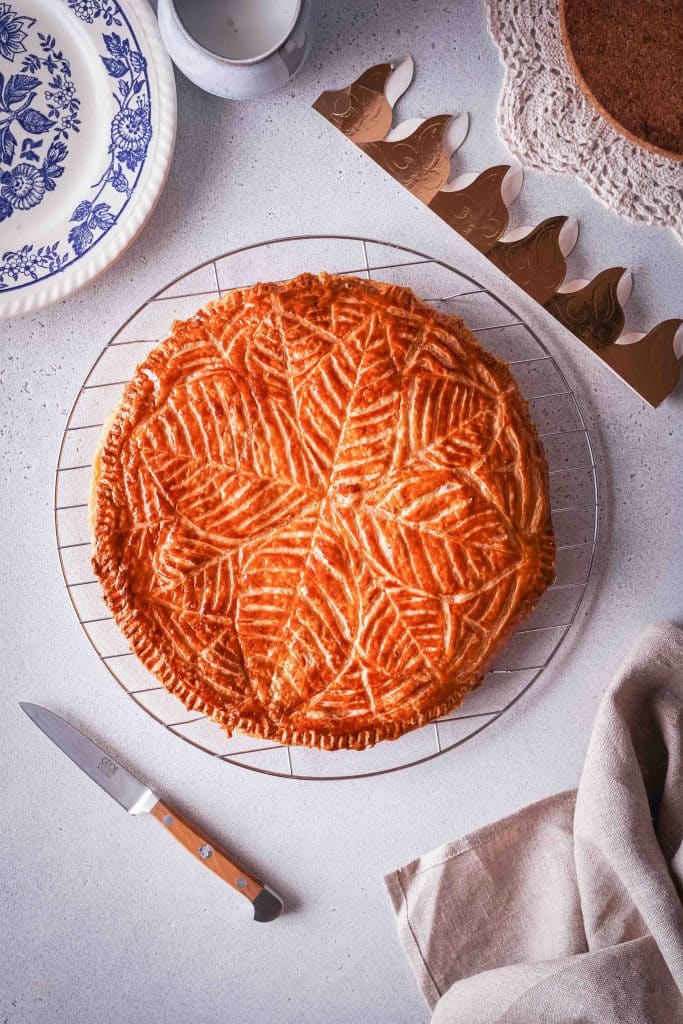
As I have a weakness for almonds, this is one of my favorite cakes! If you’re an almond fan too, I suggest you try the Amandier, an ultra-soft cake that puts almonds in the spotlight and taste a little like Galette de rois to me. And you can enjoy it all year round!
The Galette des Rois, a January tradition!
Galette des Rois is the cake we share to celebrate Epiphany, a Christian feast that takes place on January 6. It commemorates the visit of the Three Wise Men to the Christ Child, but in France, this festival has taken on a very convivial and gourmet dimension.
Although not limited to this particular day, the Galette des Rois is traditionally eaten throughout January, and sometimes as early as the end of December. However, from February onwards, bakeries stop offering them, and it’s generally unusual to serve a Galette des Rois outside this period. That’s what makes this moment even more special: we wait all year long to enjoy it!
It’s worth noting that different regions have different versions of the galette, reflecting the diversity of French cuisine.
- In northern and central France, you’ll find the classic version: a flaky galette filled with frangipane, the almond-based cream.
- In the south of France, it’s a completely different atmosphere! There, the Galette is replaced by a fluffy brioche, scented with orange blossom and decorated with colorful candied fruit. It’s really pretty and festive, but I have to admit that I remain faithful to the flaky version of the north, with its generous frangipane and that delicious contrast between the crunch of the pastry and the sweetness of the filling.
The Fève: what makes the Galette des Rois so special!
Oh yes, I haven’t told you about the famous fève aka bean yet! It’s really what makes the Galette des Rois unique, and turns this dessert into a fun and convivial moment. Traditionally, a bean is hidden in the frangipane while the galette is being prepared. The aim is to see who finds the bean!
Ideally, there should be enough people (4, 6 or 8, depending on the size of the cake) to eat the whole cake at once. A great reason to get together with family and friends!
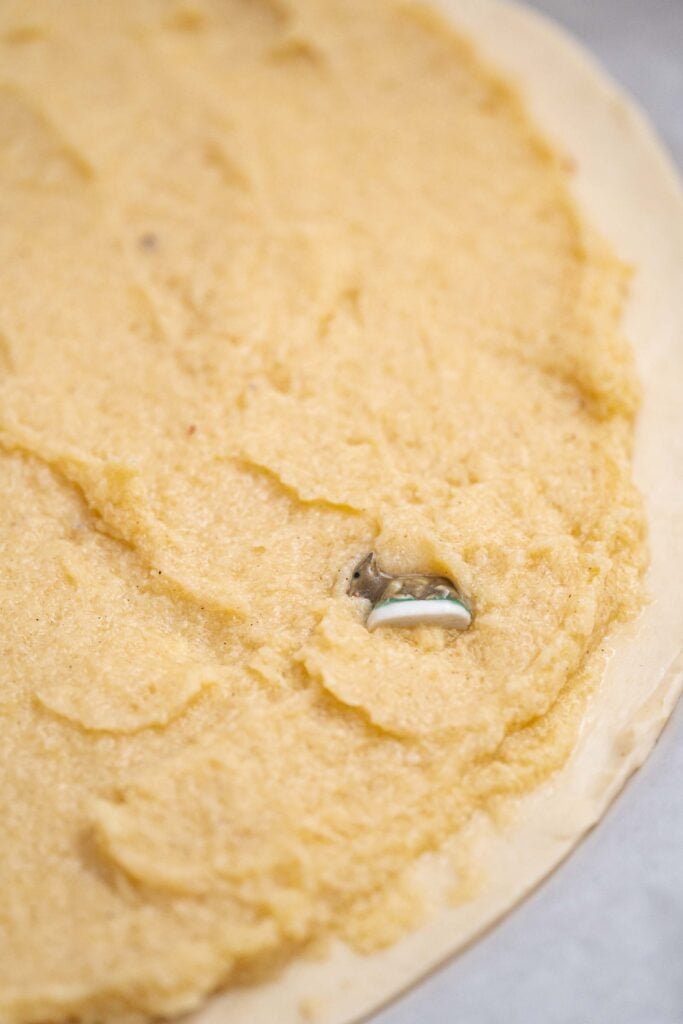
In keeping with tradition, the galette is cut into equal parts, and the youngest person slides under the table. Without seeing, he or she points to the slices to be distributed, thus avoiding anyone spotting the bean during the cutting process.
Once the slices have been served, everyone enjoys their Galette slice, taking care not to break a tooth on the bean!
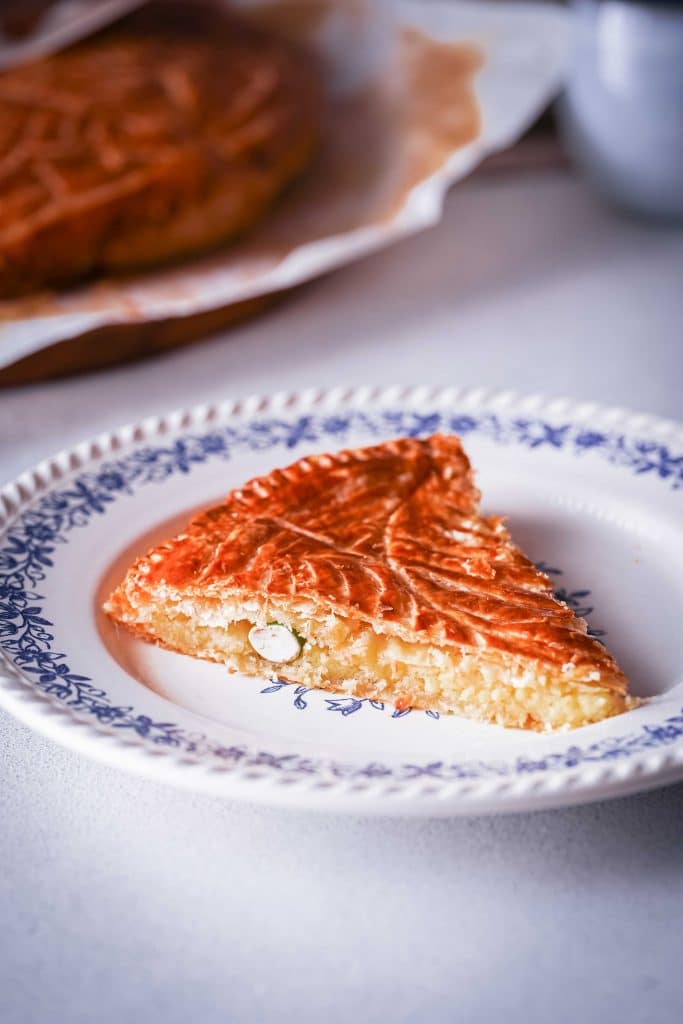
Whoever finds the bean becomes the king or queen of the day, and chooses his or her king or queen by handing over the crown. So there are two winners in this little game! By the way, the Galette is always served with a paper crown to crown the king or queen.
Did you know? The bean tradition goes back to the Romans, who during Saturnalia shared a cake with a hidden bean, and whoever found it became “king” for the day. Over the centuries, this custom became a festive part of Epiphany in the Middle Ages.
Where can I find a fève or a crown?
In the past, the fève used to a real bean, so you can always make your homemade Galette with a raw fava bean.
Today, they are often made of porcelain or plastic. Personally, I’ve been collecting porcelain fèves for years, and they allow me to slip my favorite figurines into my homemade galettes. It’s a little nod to tradition that makes each Galette even more special!
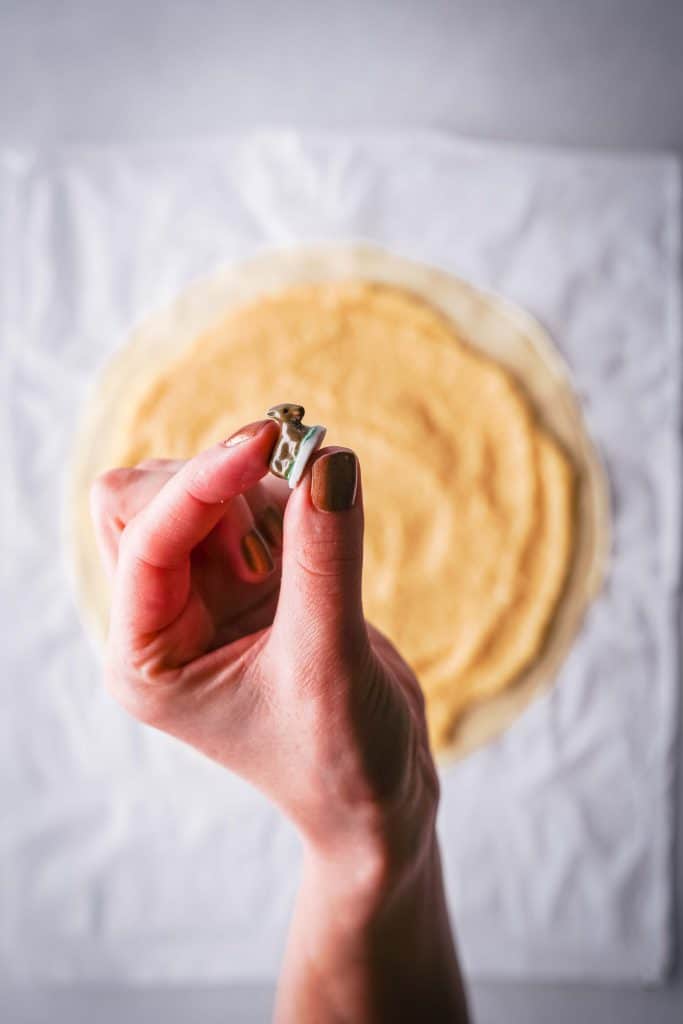
If you’re looking for nice porcelaine fèves, you can easily find them on Etsy or at the flea market. Alternatively, you can order a Galette des Rois set here: Galette des Rois Set (with Mini Pastry Fève)
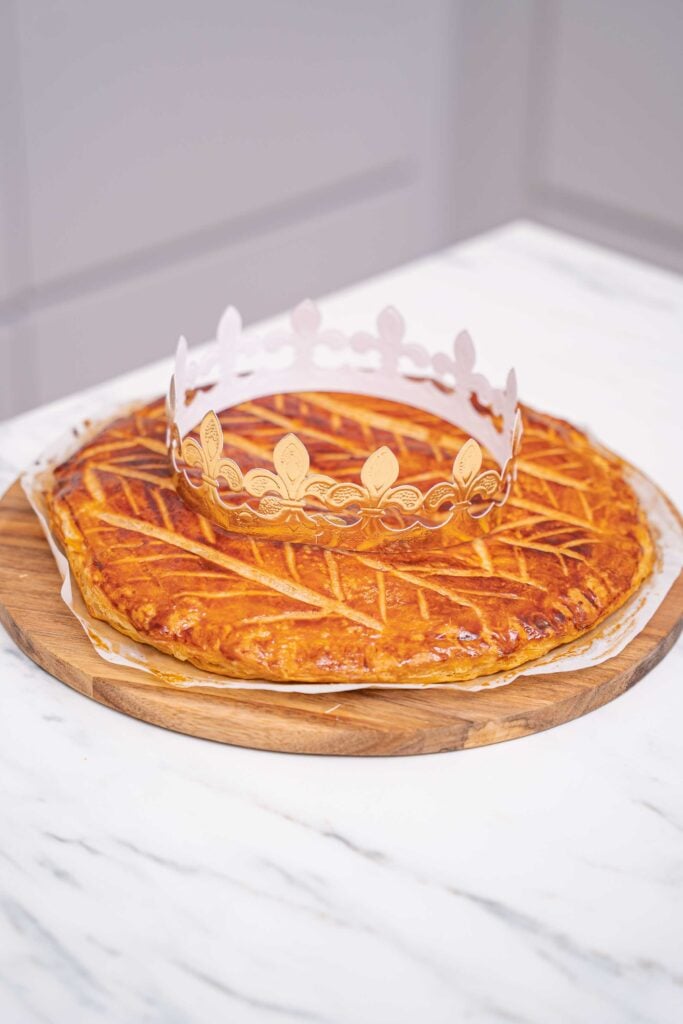
By the way, if you love French cuisine, I also invite you to explore classics like Boeuf Bourguignon, or to start making homemade croissants for a breakfast worthy of French bakeries.
Don’t hesitate to leave me a comment, it always makes me happy!

You can also find me on Instagram, Facebook and TikTok to see behind the scenes of my blog